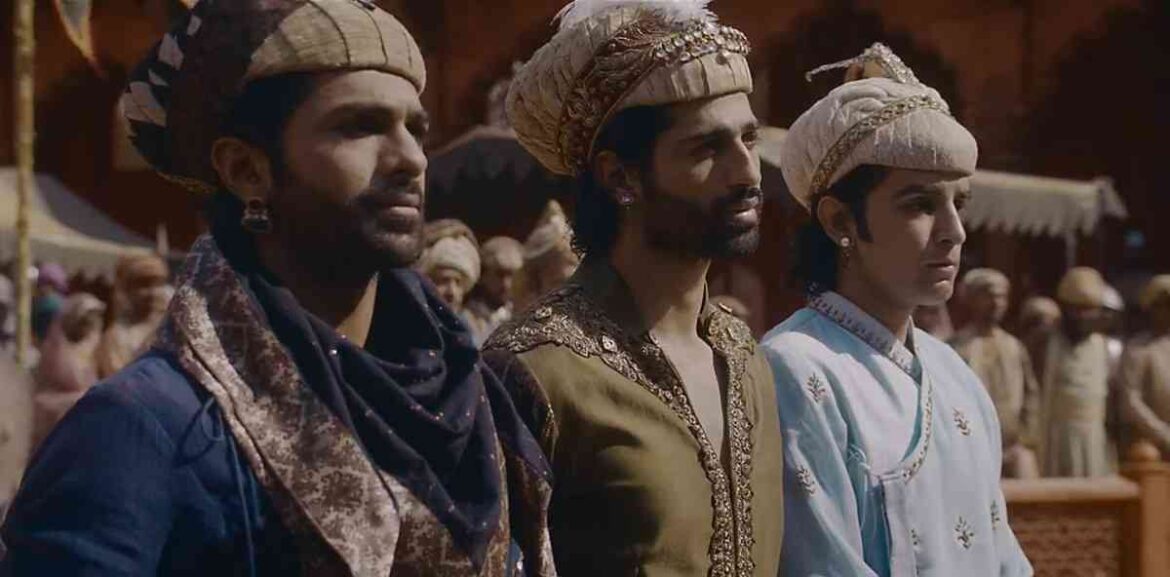History Heated Up:
A lot of what is known of Mughal history is less from text books and more from movies, notably the epic Mughal-e-Azam. Viewers of Taj: Divided By Blood (ZEE5) would have many of their set notions shattered, as the series presents a very different look at the reign of Emperor Akbar. Partly taken from history and liberally peppered with fiction by writers William Borthwick and Simon Fantauzzo (Ajay Singh wrote the dialogue) the 10-part show created by Abhimanyu Singh and directed by Ronald Scalpello, is grand in scale but scattered in content, coming right at a time when the long-dead Mughals are getting a bad rep in retrospect.
Emperor Akbar (Naseeruddin Shah) has three sons, none fit to inherit the throne, three scheming wives, multiple concubines and advisors with their own nefarious agenda. Prince Salim (Aashim Gulati) is a drunk, doped sex maniac (wipe off that memory of a lovelorn Dilip Kumar), Prince Murad (Taha Shah Badussha) is a violent lunatic and the youngest Prince Daniyal (Shubham Kumar Mehra) is gay but also a devout Muslim.

Birbal & Akbar
As the ageing emperor despairs at the thought of one of these three reprobates as his successor, in Mewar, Maharana Pratap (Deep Raj Rana) is refusing to cede an inch of his kingdom; in Kabul, his half-brother Mirza Hakim (Rahul Bose) is set for war; there are plots being cooked up by members of his inner circle, historian Abul Fazal (Pankaj Saraswat) and the cleric Badayuni (Aayaam Mehta), while in the harem, Jodha (Sandhya Mridul), Ruqaiya (Padma Damodaran) and Salima (Zarina Wahab) are caught up their own power play. The only loyal ones are Birbal (Subodh Bhave) and Man Singh (Digambar Prasad).
The palace is populated with as many silent sentries, as there are half-clad kaneez (slave girls), floating around, amidst eunuchs and spies. Any head wearing that crown would not just be uneasy, but downright paranoid! Amidst all this toxic dust swirling in and around the palace, is Anarkali (Aditi Rao Hydari)—portrayed not quite as glamorously as the woman seen on stage and screen.
To control his libido, Salim is forced to marry not one but three women—in an inadvertently comic scene, he strolls from the bed of one wife to the other.
The sets are spectacular, as could be expected, the battle scenes shot (by Simon Temple) with all the blood, gore and valour, the costumes could be copied by today’s designers (the recent Disney+Hotstar show, The Empire, did it better). But the series falls far short in its characterization and performances. The three princes look like they stepped out of the same acting school, were buffed in the same gym and styled at the same salon. (In one scene Salim actually does the chest bump with his buddy!) Even Naseeruddin Shah, with his perfect voice and diction could not bring this Emperor Akbar to life—sadly, he looks much too old for the part (the real Akbar died at 63, so in the period portrayed in the film he was much younger). Men who are supposed to be his contemporaries have smooth skins and tight jaws, unlike the wrinkled and jowly Akbar. Without making it a spoiler, viewers might be taken aback to see, in this version, who Anarkali was—certainly not the dewy-eyed courtesan of popular lore.
It looks like there will be more seasons of this Mughal history show, since there are Shah Jahan, Aurangzeb and Bahadur Shah Zafar still to go, from the list of noteworthy Emperors.
(This piece first appeared in seniorstoday.in)

